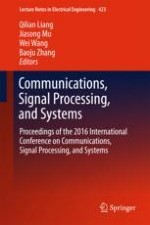2018 | Book
Communications, Signal Processing, and Systems
Proceedings of the 2016 International Conference on Communications, Signal Processing, and Systems
Editors: Qilian Liang, Jiasong Mu, Dr. Wei Wang, Baoju Zhang
Publisher: Springer Singapore
Book Series : Lecture Notes in Electrical Engineering
